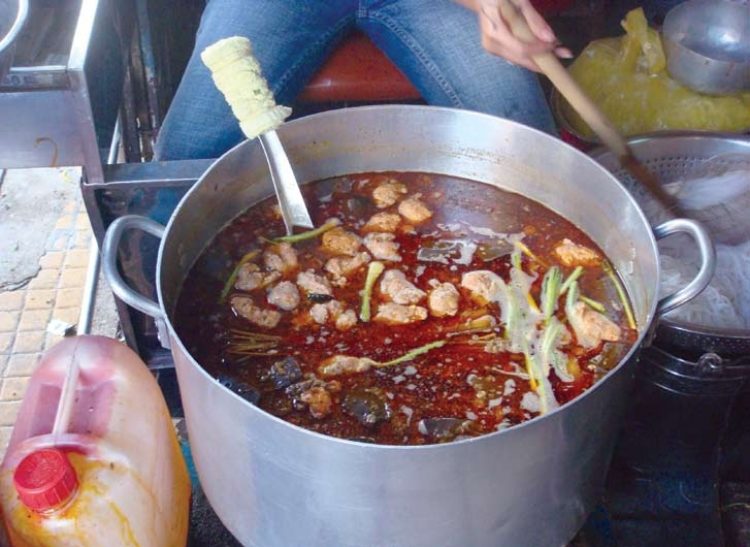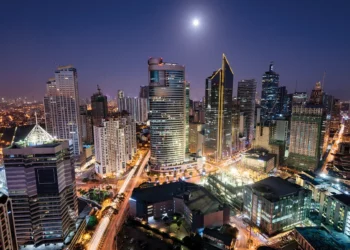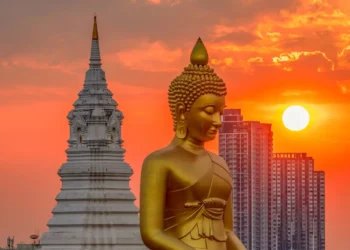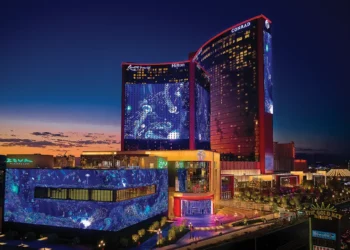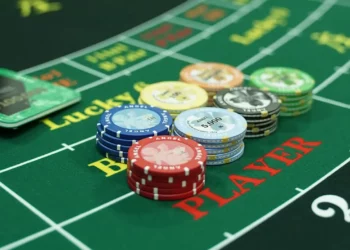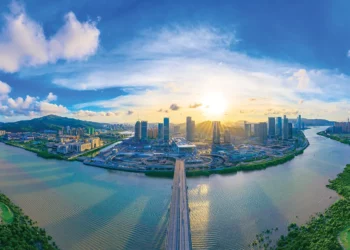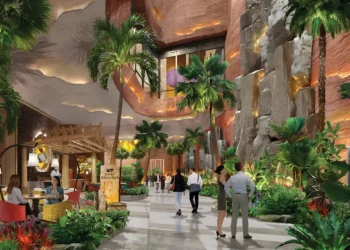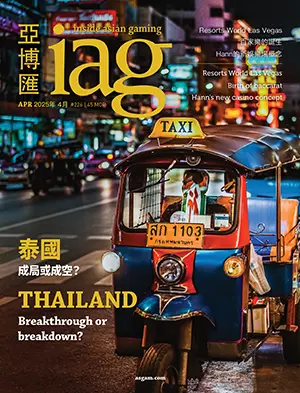Two new integrated casino resort projects with heavy-hitting development partners have been announced in Vietnam
Seasoned Vietnam watchers will tell you that when it comes to major real estate development projects, it’s more important to focus on the trends than on the headline numbers quoted by government officials for capital investment. By that reckoning, the trend in the casino gaming segment is clear. Two major multi-billion dollar casino resort projects with ‘serious’ (i.e., internationally-recognised) partners have been announced within weeks of each other in addition to the Ho Tram Strip originally approved back in 2008. The latter is currently on schedule for a first phase opening of its first casino hotel—MGM Grand Ho Tram–in Q1 2013.
A key question is whether the timing of this IR trend is significant, and whether it’s an indication that Vietnam could soon liberalise its casino market to allow locals to play. An assumption behind that thought is that it would be hard, if not impossible, for three or more multi-billion dollar integrated gaming resorts to exist without such market liberalisation. Certainly, the experience in South Korea is that the barring of local players in all but one of the country’s 17 casinos has limited both the size of the market and the amount of capital investment it can support. There are currently four casinos in Vietnam open to foreigners-only, but they are relatively small-scale operations, not integrated resorts.
Vietnam had a population of 85.8 million at the 2009 census. Although the average income is just a shade over US$1,000 per annum, the country also boasts one of Asia’s fastest growths in new millionaires (in percentage terms). But currently, none of those economically ambitious Vietnamese are allowed to gamble in the country’s four currently licensed casinos.
As background to the current legal position, Articles 248 and 249 of Vietnam’s Penal Code criminalise gambling in Vietnam. Certain exemptions allow casinos and electronic gaming that cater exclusively to foreigners. For practical administrative purposes, ‘foreigners’ includes Vietnamese who hold the passport of a foreign country. These are known as ‘Overseas Vietnamese’, many of whom or their parents left the country during or after the Vietnam War.
This diaspora amounts to approximately 3.7 million people, of whom 1.6 million live in the US or have the right of residency there, according to the US Census Bureau.
Vietnam had an estimated 4.5 million tourist arrivals in 2010, according to the Vietnam National Administration of Tourism (VNAT). Macau clocked up 21.7 million visitors in 2009, according to Macau government statistics. Those Macau visitors currently support a market that has spent an estimated US$10 billion on casino infrastructure since the first foreign-owned casino, Sands Macao, opened in 2004. (That capital spend from the private sector excludes the yet-to-open Galaxy Macau at US$1.8 billion and Sands China’s Cotai 5 and 6 project, weighing in at US$4.2 billion.) Vietnam is proposing more than US$8 billion in casino and hotel investment in a market currently supported by only a fifth of the tourists Macau receives.
Asian Coast Development Ltd (ACDL), the developer of the Ho Tram Strip, will, however, have noted Macau’s success in squeezing a huge amount of revenue out of a statistically miniscule number of high roller customers. In Macau, 71.4% of all revenues for games of fortune (i.e. casino games) in 2010 were supplied by visiting VIP baccarat players, probably numbered in the few thousand. Lloyd Nathan, the CEO of ACDL, is a former President of Global Gaming Development for MGM MIRAGE (as the company was known, prior to the name change to MGM Resorts International). He and his management team will undoubtedly have spotted the possibility that Ho Tram could also make a good living from its gaming operation if it focuses first on courting foreign high rollers, second on foreign mass market players, and only third worries about local players if and when they are allowed to play.
But factors including government policies on player credit issuance, transport connectivity and tax competitiveness must also be considered when assessing Vietnam’s potential appeal to high rollers. Junket operations can certainly currently be found in at least two of the four casinos open to foreigners—the Royal International Gaming Club in Halong Bay (not far from the proposed integrated resort on Cat Ba Island) and the Lao Cai International Hotel near the border with Laos. The legal status of credit issuance for gambling in Vietnam is not currently clear, though, and may need some regulation before international investors will feel comfortable with the level of regulatory risk that could pose both to their future Vietnamese operations and to their overseas ones. Online gambling marketed to Vietnamese nationals takes place in the country—some of it funded by credit, according to IAG’s sources—but it’s currently unlicensed and therefore illegal.
Vietnam also currently imposes significant entry barriers on many overseas visitors—not the ideal posture for a country wishing to build its foreign tourism industry. According to an online circular issued by the Vietnamese Embassy in the US, travellers from Vietnam’s important regional feeder markets of China (including Hong Kong and Macau), India, Japan, South Korea and Malaysia need a visa unless they are diplomats. Although visas on arrival are available to some of those nationalities, travel experts currently advise that hold ups can occur and advise would-be visitors to get their visa prior to arrival. Ordinary passport holders from Indonesia, Laos, the Philippines, Singapore and Thailand are allowed up to 30 days’ stay visa-free.
The fact that the MGM Grand Ho Tram over at the Ho Tram Strip is proposing to offer 90 live tables and 500 electronic games in the first phase, due to open in the first quarter of 2013, followed by another 500 electronic games in the second phase, suggests the resort developers are appealing to high rollers and the mass in equal measure. (The entire development has a licence for up to 180 table games and 2,000 electronic games.) If the mass-market were the principal target, then Vietnam still has a long way to go to catch up with the visitor numbers available to Macau operators.
Figures released by VNAT show that between January and July 2010, 2.9 million visitors came to Vietnam. That’s a 34.9% growth year-on-year. In the first eleven months of 2010, 22.7 million people visited Macau, a year-on-year increase of 15.1%, according to Macau’s Statistics and Census Service. Perhaps more encouragingly for Vietnam, arrivals from China were up 95.4% in the first seven months of 2010, though that is in part a function of starting from a low base.
Vietnam currently offers a lot more air transport connections than Macau, but not nearly as many as Singapore. Changi Airport Group, the operator of Singapore’s main international air terminal, said in November it estimated 40 million passengers will have used its facilities during 2010.
Taxing times
It would be fair to say there is currently some opacity regarding the Vietnam government’s policy on gaming tax. An inquiry made by IAG to the Ministry of Finance indicated gaming tax is levied in Vietnam at 25% of the gross. Another source familiar with the Vietnam industry suggests the effective total tax on gross revenue is currently 34%.
The source states: “A luxury tax accounts for the first 20% of the 34%. This applies directly to gross revenue. This is subject to change without notice and without rational analysis. A VAT [excise] tax applies in an uncertain manner. This accounts for the second 14% of the 34%. This is also subject to change without notice.
“Tax on [corporate] profit is about 30% of net revenue. This may have changed in the last two weeks. No one can be sure what it will be next year.
“There are some investment tax credits for investment in undeveloped areas, but whether you achieve any relief depends more on your political power than on promulgated rules or regulations,” adds the source.
Vietnam’s tax on the gross may currently be (slightly) lower than Macau’s, but when Vietnam’s higher rate of corporate tax is taken into account, the burden on the industry is actually greater. Vietnam’s tax take is also very much greater than that of Singapore (excluding the casino entry fee imposed on Singaporeans), and that could be significant if the new Vietnam IRs want to compete regionally for VIP players. Also, unlike Singapore, the Philippines and Australia, Vietnam’s gaming tax regime currently makes no distinction between VIP and mass-market gaming.
Those familiar with Vietnam will be aware that what gets announced in real estate circles and what actually gets built is not always the same thing. Interestingly, both the newcomer casino projects—like the more established Ho Tram—appear to have serious partners both on the operational and finance side. Vinaconex, the developer of the proposed Cat Ba Amatina project in the north of the country, is a large and politically very well-connected Vietnamese conglomerate with access to a lot of finance and financial expertise. Genting, named as a participant in the Hoi An project, already has extensive experience of international casino project management and operations in the Philippines (Resorts World Manila), Singapore (Resorts World Sentosa) and the United Kingdom (the Genting UK casinos).
Provincial government officials in Vietnam do, however, have something of a track record for inflating the total value and scope of development projects—possibly because they are competing for the political favour of the country’s central government in the race to attract foreign investment and develop the country’s infrastructure. An example of this is that although the Hoi An scheme has been announced by regional officials as a US$4 billion project, closer examination of the deal suggests the joint venture partners Genting and VinaCapital have themselves only legally committed to a minimum of US$800 million over four phases.
Added to the opacity over exactly how much money has been committed in the Hoi An project is a degree of opacity over the future direction of the country’s policy on the gaming industry. The five-year term of office for current Prime Minister Nguyen Tan Dung expires in July this year. It is not clear at this stage whether he will seek a new term. A possible indicator is that his predecessor and political mentor was in office for 11 years.
The budget for the Cat Ba Amatina project has not yet been announced. But indirectly added to the bill is a range of major infrastructure projects—including Tien Lang International Airport, a major highway and a bridge. The latter two schemes are designed to reduce the road journey time from Hanoi, 170 kilometers away, to two and a half hours.
In 2004, UNESCO recognised Cat Ba Island as a Biosphere Reserve of international importance. Quite how that fits in with marketing the place as a casino resort to more than 300 million people in neighbouring Yunnan province in southwest China hasn’t yet been outlined by the developers.
The Law on Investment (Article 37) and related Decree No. 108 of September 2006 provide the legal framework for casinos in Vietnam, although provincial authorities can and do issue detailed regulations within this framework. This accounts for why new projects are announced by provincial officials rather than by the central government. Under Article 37 of Decree 108, however, only Vietnam’s prime minister can give ultimate approval for a casino licence. Electronic gaming is governed by Prime Ministerial Decision 32 on Regulations on Prize Winning Electronic Games for Foreigners, though the Vietnam government recently announced its intention to issue a law to regulate sports gambling for local Vietnamese.
The website VietNamNet Bridge reported in October that during the FIFA World Cup in South Africa in June and July last year, pawnshops in Vietnam were flooded with assets including mobile phones, laptop computers and even luxury cars. The report suggested this was because Vietnamese people pawned their valuables to get cash for football betting. As they lost, they also lost the assets to the pawnshops.
The website added that people in rural areas even pawned land plots inherited from parents or grandparents. Given that one of the founding principles of communist Vietnam was land redistribution to the poor, the trend of effectively mortgaging land for unregulated sport betting—if allowed to continue—could have undermined the party’s remaining legitimacy and been dangerously socially divisive. Under the proposed regulation of the sports betting industry, not only will the government benefit from tax revenue, but minimum daily bets (10,000 dong, equal to 50 US Cents) and maximum daily bets (1 million dong, or US$50) will be imposed. A number of major Western suppliers of lottery services have reportedly indicated an interest in tendering for legalised sports betting services in the country.
Vietnam committed to liberalising its markets for many goods and services as a condition of its joining the World Trade Organization in 2006. It’s worth noting, however, that domestic and cross-border casino and gambling services are excluded from the free trade requirements. Any move towards liberalisation is a purely domestic political consideration.
Any such liberalisation will certainly benefit from international expertise in management and marketing. To get some idea of the relative immaturity currently of the existing legal casino market in Vietnam, in a July 2009 report, the Asia/Pacific Group on Money Laundering—an international and inter-agency body promoting best financial practice in financial industries and the gaming industry in the region—estimated that an existing casino; Hai Phong Bay, had a turnover of only US$3 million a year with a maximum payout per wager on roulette of only US$2,000. Expect casino operators with the marketing expertise of MGM Resorts International and Genting to beat those numbers easily on entry to the Vietnam market.






